Intro
When it comes to virtual reality technology, we tend to think of movie classic such as The Matrix Trilogy, Tron Legacy, Virtuosity, etc. Virtual technology is also synonymous with games such as Second Life or Sims. This technology has become more prevalent in healthcare, aerospace and automotive industry. One wouldn’t initially associate virtual reality technology with the consumer goods world; however that’s until the Kimberly-Clark Corp created a virtual reality tool that’s slowly taking the retail market by storm. Kimberly-Clark has created a virtual reality Innovation Design Studio with hopes of gaining a better understanding of consumer behavior and allow for the testing process of new products to become faster and more efficient. Essentially this tool allows them the ability to create a virtual reality of any given retail store, such as Walmart, or Target, in which they can test how well products do and how consumers behave. This can provide retailers an idea of optimum use of product placement and advertising displays as well. This also allows retailers to virtually design their store space before it’s actually unveiled to the public, and their competitors. So this tool provides a sense of discretion on what potential ideas are before the competition is aware. The potential of virtual reality technology is just scratching the surface and can only trickle down into the other business sectors as it becomes more popular.
Benefits to Business
“What are the business benefits derived from the technology implementation described in this case? Also discuss benefits other than those explicitly mentioned in the case.”
There are several business benefits taken from this technology, but the most significant just happens to be the one that could save and potentially make Kimberly-Clark a lot of money. Kimberly-Clark took sensors “embedded in the walls, ceiling, and floor to detect a person’s movements, track their location and even what a person is exactly looking at.” They then feed this information into eight Hewlett Packard high-end rack-mount PC’s to provide a virtual reality like one has seen in this industry before.
Sure everyone has seen a flavor of virtual reality, but Kimberly-Clark has taken that world and applied it to theirs. Having customers go through a “virtual store” and track their eye movement and their reaction to product placement and advertising, did not only save them money, but was revolutionary. Traditional product testing typically took “8 months – 2 years”, Kimberly-Clark estimates this “virtual store” has cut product development at least in half. This is a perfect example of how when you think “outside the box” or against traditional thinking, technology can really amaze you.
And the innovations in virtual reality haven’t stopped there. As you can tell from the pictures,
Virtual reality has made advances in medical procedures, education and has even helped individuals who suffer from vertigo and other balance related difficulties.
What About Virtual Stores
“Are virtual stores like this one just an incremental innovation on the way marketing tests new product designs? Or do they have the potential to radically reinvent the way these companies work? Explain your reasons.”
Virtual stores have the potential to radically reinvent ways companies operate because the technology used helps to point out any flaws in a company’s current system. With this technology testing new products are now much more effective and more efficient in regards to time and cost. The arrangement of products can increase foot traffic in stores, as stated in the case study, which in turn generates more sales. These virtual stores could also help companies better market their products in geographically and culturally different areas. If Kimberly-Clark were willing to reduce the cost of using their product to be affordable for smaller businesses then the owners could also benefit from this technology. It would provide small businesses with the same advantages that major chains with financial positioning have when using virtual stores to test their products.
This article recounting a small business owner’s struggle is a perfect example of how virtual shopping technologies can help small businesses. Basically the business owner states that they almost threw in the towel because costs were too high, mainly security costs for credit cards and other sensitive information. Overstock.com is a website that relieves some of the stress off of small business owners while taking a certain percentage of the revenue by allowing them to sell their products through their site. Basically what is being applied here for many small businesses that deal with Overstock.com is Coase’s Transaction Cost Theorem which states that a bargaining will lead to an efficient outcome regardless of property rights if there are no transaction costs and an external trade is a possibility.
Other Industries that Benefit
“What other industries could benefit from deployments of virtual reality like the one discussed in the case? What new products or services could you see within those industries?”
Kimberly-Clark used virtual reality to test market their products and work with retailers to get better positioning and penetration in retail stores. This technology, virtual reality, has uses in almost any industry that we can think of in the future. Wherever there are interactions in society, virtual reality could be utilized to model and observe the interactions. There are many industries that could use this information including, but not limited to entertainment, military, automotive, and housing.
The entertainment industry is always looking to get viewers closer to the action. With virtual reality one could literally be in the movie instead of watching with 3D glasses we would be an avatar and the movie would be happening all around. Individuals could choose which character they want to be and act out the movie even. The gaming industry would love to get players inside games using their motor skills instead of a remote to move around in the virtual gaming world.
Militarily, we could have soldiers training in a virtual world to test improve skills and provide immediate feedback. The training program could be like that in the Matrix where we could stop, instruct, and continue training. This technology could shorten training times and help get soldiers ready for battle sooner. We could also model the exact location that they will be going into, right down to the buildings and people they will be encountering. There is nothing like the experience of already being there before in training.
In the automotive world dealerships have such high inventory costs and it is expensive to have sales people selling cars as well. This is part of the reason dealerships have moved to internet sales in recent years. Imagine a virtual reality that would allow a potential buyer to move around a vehicle inside and out and even test drive the car in a virtual world. After which they could simply order the car to be delivered to their house from the factory floor.
The housing and hotel industry could set up properties in a virtual world to view the homes of interest all in the same location. This would eliminate all the driving around to different locations and spending days searching for properties. This could potentially be set up in Second Life and shown there.
Second life, is an interesting world in and of itself because people make virtual products and sell them for real money. Virtual reality offers a way to communicate across channels to suppliers, customers, and other business partners. The virtual environment is something that allows companies to pitch products and services from almost any business line or idea and either test it out or present it to clients. Allowing presenters and viewers to all be in different locations cutting down on travel expenses and easier scheduling.
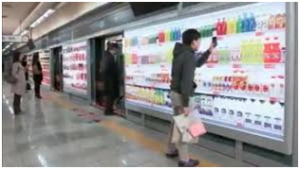
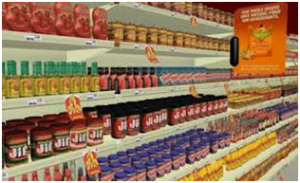
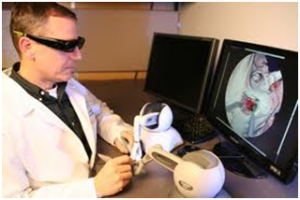
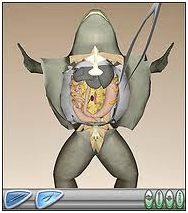
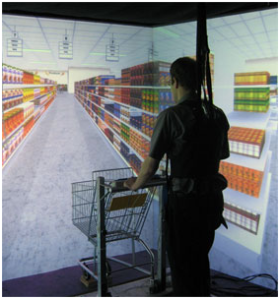
Leave a comment